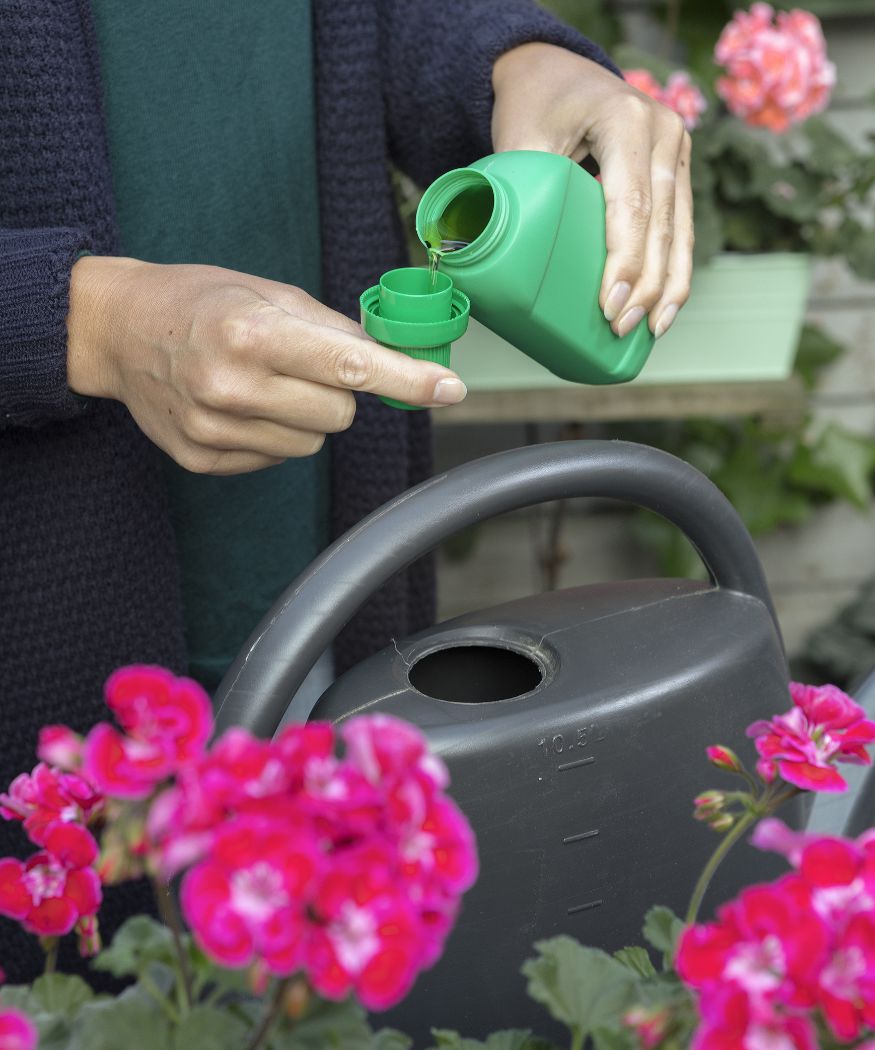The geranium’s boundless flowering makes it a favourite on balconies and terraces all over Europe.
No wonder: Nothing conjures up a summer mood as easily as the sun-loving South African geranium. And it requires a minimum of care, because this robust summer gem can even cope with heat and occasional drought without complaint. If you want your neighbours to be green with envy with all the blossoms, you should think about fertilising. It’s child’s play.
The experts at Pelargonium for Europe (PfE) know what to do to make geraniums grow even better and bloom even more beautifully.
One thing in advance: the more you feed your geraniums correctly, the more abundant their flowers will be.
Fertilising with liquid fertiliser
Mix liquid geranium fertiliser or liquid fertiliser for flowering plants into the water weekly or every 14 days, according to the dosage instructions. If the soil is already coming away from the edge of the container, water without fertiliser first so that the plants can meet their moisture requirements.
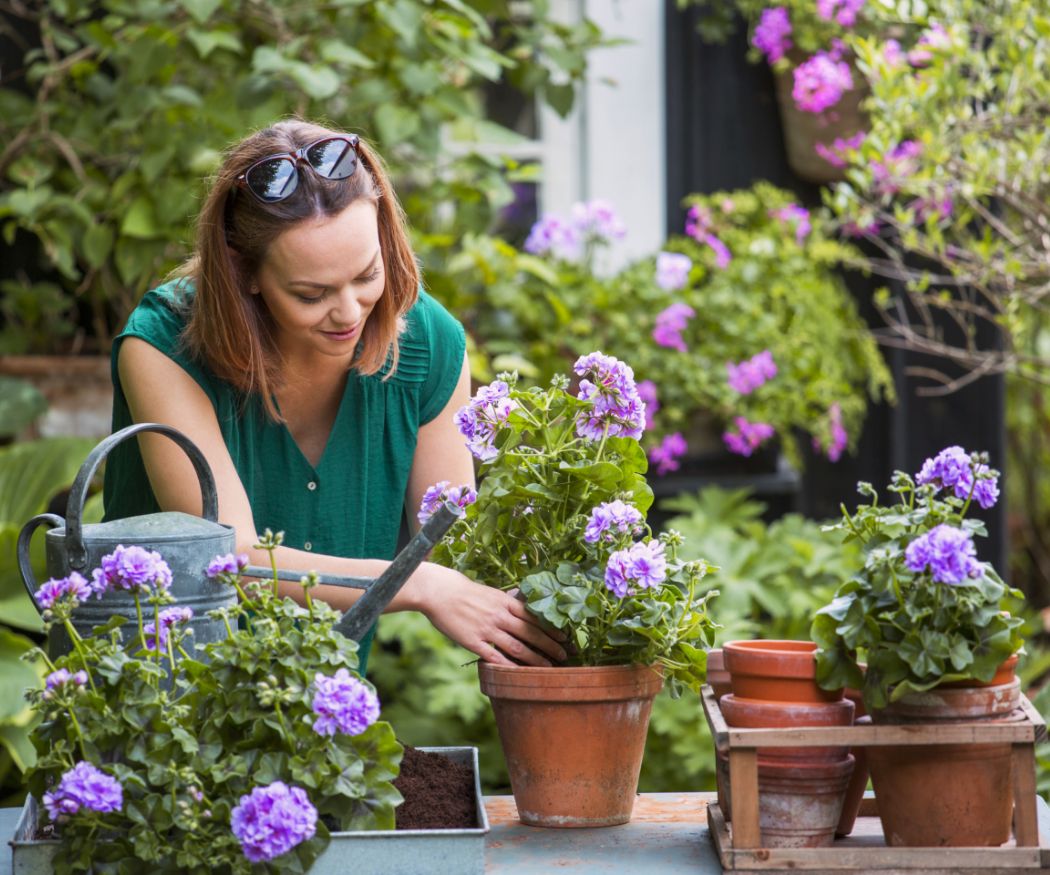
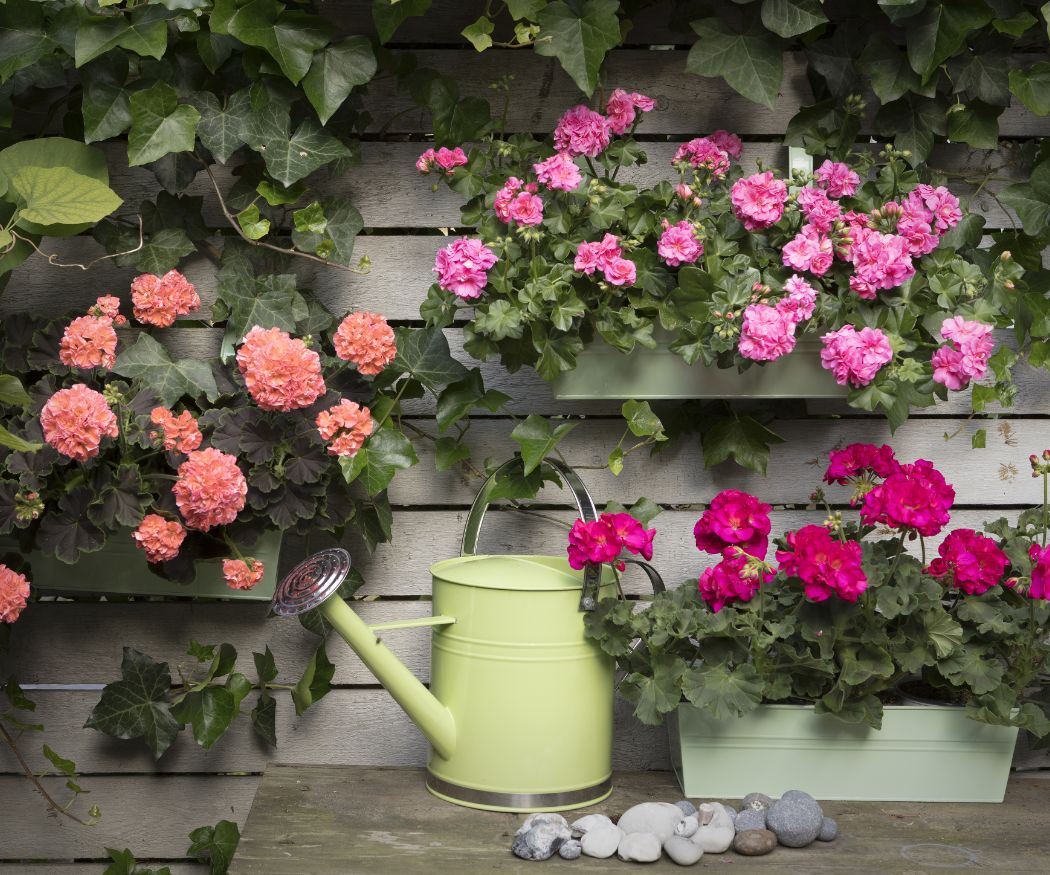
Fertilising every time you water
With irrigation fertilisation, known as ‘fertigation’, a small amount of nutrients is added to the water every time the plant is watered.
The advantage: If the plant grows quickly on warm, sunny summer days and therefore needs a lot of water, plant food is constantly added.
The rule of thumb is: 1-2ml of liquid fertiliser per litre of irrigation water. Because of the low fertiliser concentration, you can even water on dry soil.
When to start fertilising geraniums?
The first fertilising is due four weeks after planting. In autumn, the weather situation decides. By the end of September at the latest, fertilising is no longer worthwhile because the plants no longer need so much food.
How about homemade liquid fertiliser?
You can produce compost and nutrient-rich liquid fertiliser, sometimes known as ‘worm tea’, yourself in your home with a garden wormery. Or for households with a smaller garden, balcony or terrace, you can use a sealed composting bin in which micro-organisms help produce fertiliser from food scraps.
Try fertiliser sticks that last for three months
If you sometimes forget the fertiliser when watering, fertiliser sticks or spikes are a good idea. These sticks are compressed feed, made into a stick. As you water the plant, the stick dissolves gradually, releasing the nutrients into the soil, where they are taken up by the roots. They give the geraniums long-term energy and last for up to three months. Check the packaging to know how many sticks you should put into the soil. These can be used at any time.
Slow-release fertiliser for a carefree summer
Slow-release fertiliser is considered the all-round carefree solution when it comes to plant nutrition. In these products, the nutrients are encased in a membrane through which they are released in doses. Mix slow-release fertiliser into the soil when planting. Re-fertilising also works. Simply dig the fertiliser beads as deep as possible into the soil.
What about pre-fertilised potting compost?
Whether the nutrients in potting compost pre-fertilised with slow-release fertiliser are really enough for a whole season depends on the summer. The stronger the geraniums grow and flower, the more nitrogen, phosphorus and potassium they need. If the plants suddenly develop slower than usual, it’s worth adding liquid fertiliser.
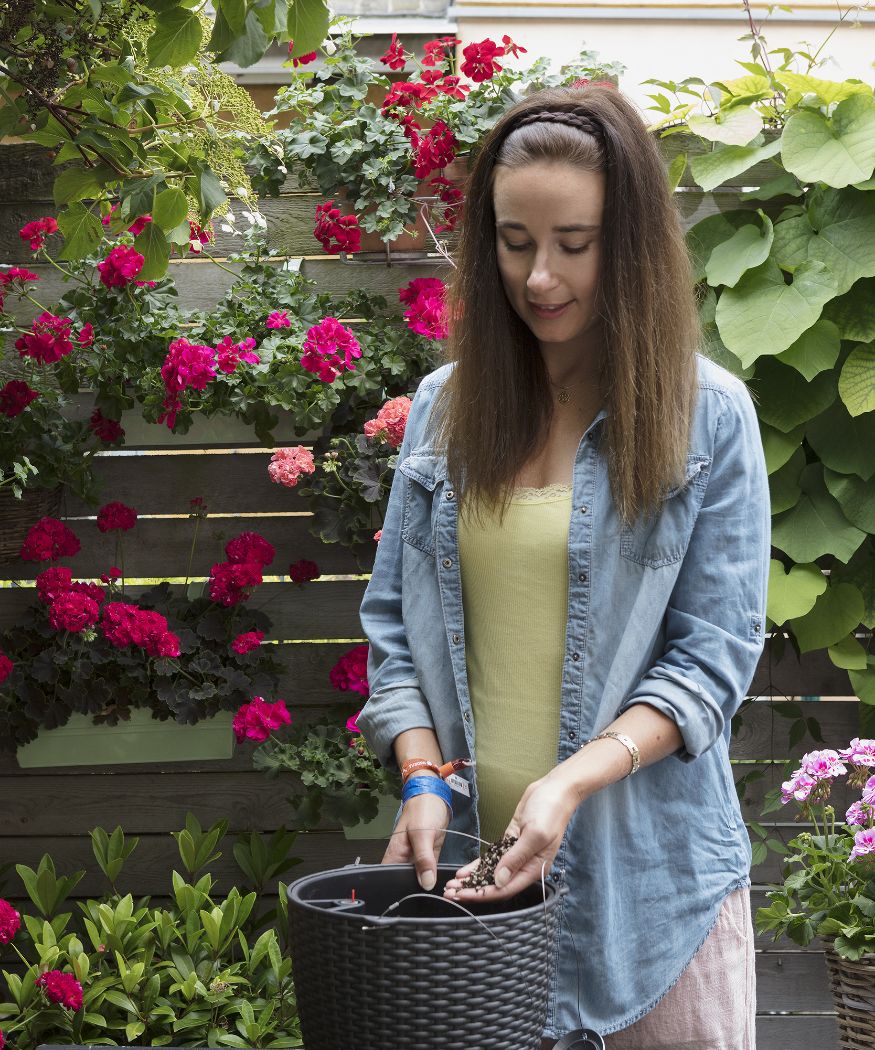
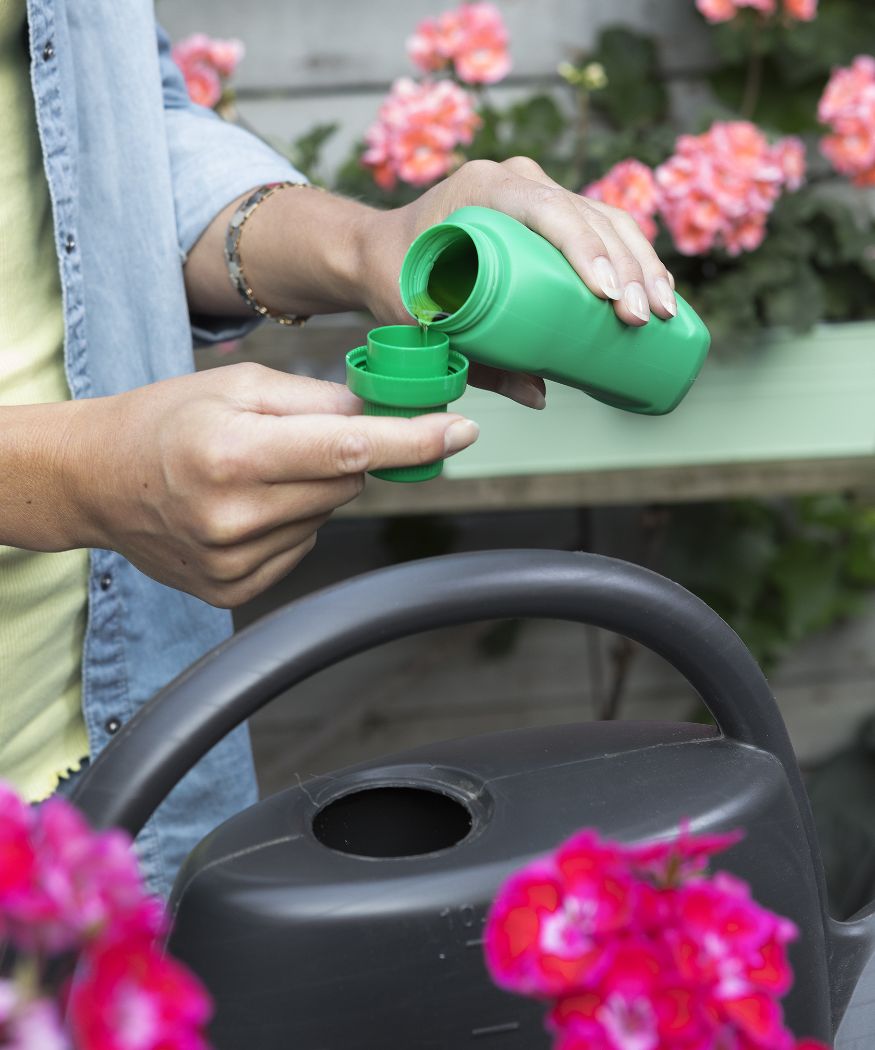
Flower Fertiliser FAQ
Inorganic fertiliser is produced artificially using chemical formulas. The nutrients are present in structures that the plants absorb quickly. However, the soil does not store these structures very well.
Organic fertiliser comes from natural sources of animal or plant origin. Here, the nutrients are usually incorporated into complex chemical structures. Biological activity in the soil converts them to make them available to plants. These fertilisers lasts a long time, but are slower-acting as large organic molecules have to be broken down by soil organisms before the nutrients within them are released for plant use.
Which is better? Plants don’t care how they get the nitrogen, phosphorus, potassium and trace elements they need to live. Geranium fertilisers perfectly meet the needs of these beautiful messengers of summer. Commercially available flowering plant fertilisers also contain all the necessary nutrients and trace elements in sufficient quantities and in balanced proportions to provide geraniums with good care.
Nitrogen – the growth element
Among other things, plants need nitrogen for the green pigment chlorophyll and for their metabolism. If there is enough nitrogen, geraniums look lush, green and vigorous. If it’s missing, the green leaves will fade and the geraniums won’t grow at all. An oversupply results in dull green foliage and soft shoots.
Phosphorus – the flower nutrient
If it has enough phosphorus, the geranium will bloom profusely. It is the power nutrient par excellence, important for the transfer of energy in the plant cells. If it’s lacking, flowers will be fewer and the leaves will turn reddish. But too much phosphorus is not good either, because it can lead to growth suppression.
Potassium – for strong plants
Potassium controls the water balance and strengthens plant tissue. It is involved in countless metabolic processes and strengthens the plant’s defences. If there is too little of it, the foliage dries out from the edges. The first signs of deficiency are in older leaves.
Like all plants, geraniums also need calcium, sulphur and trace elements. The best known are iron and magnesium. If iron is lacking, the areas between the leaf veins will bleach first on younger leaves. With magnesium deficiency, this happens first on the older leaves.
Detailed advice on all questions about geranium care is available at specialist shops.
 English
English Dansk
Dansk Deutsch
Deutsch English
English Español
Español Français
Français Hrvatski
Hrvatski Italiano
Italiano Magyar
Magyar Nederlands
Nederlands Norsk
Norsk Polski
Polski Română
Română Slovenski
Slovenski Slovenský
Slovenský Suomalainen
Suomalainen Svenska
Svenska Česky
Česky Ελληνική
Ελληνική Български
Български